Israel Defense Forces
On the orders of first Prime Minister David Ben-Gurion, the IDF was formed on 26 May 1948 and began to operate as a conscript military, drawing its initial recruits from the already-existing paramilitaries of the Yishuv—namely Haganah, the Irgun, and Lehi.Since 1967, the IDF has maintained a close security relationship with the United States,[4] including in research and development cooperation, with joint efforts on the F-15I and the Arrow defence system, among others.Hashomer was an elitist organization with a narrow scope and was mainly created to protect against criminal gangs seeking to steal property.The Zion Mule Corps and the Jewish Legion, both part of the British Army of World War I, further bolstered the Yishuv with military experience and manpower, forming the basis for later paramilitary forces.Israel ratified the Geneva Conventions on July 6, 1951,[17] and on January 2, 2015, the State of Palestine acceded to the Rome Statute, granting the International Criminal Court (ICC) jurisdiction over war crimes committed in the Occupied Palestinian Territories (OPT).[6] Human rights experts argue that actions taken by the IDF during armed conflicts in the OPT fall under the rubric of war crimes.In June 2024, Israel's Supreme Court unanimously ruled that Haredi Jews were eligible for compulsory service, ending nearly eight decades of exemption.Many Religious Zionist men (and many Modern Orthodox who make Aliyah) elect to do Hesder, a five-year program envisioned by Rabbi Yehuda Amital which combines Torah learning and military service.Although Israel has a majority of Jewish soldiers, all citizens including large numbers of Druze and Circassian men are subject to mandatory conscription.Abdo had voluntarily enlisted in the IDF, which her family had encouraged, and transferred from the Ordnance Corps to the Caracal Battalion, a mixed-gender unit with both Jewish and Arab soldiers.[79] Under a special arrangement called Torato Umanuto, Haredi men could choose to defer service while enrolled in yeshivot and many avoided conscription altogether.A decade later, professor Uzi Even,[83] an IDF reserves officer and chairman of Tel Aviv University's Chemistry Department, revealed that his rank had been revoked and that he had been barred from researching sensitive topics in military intelligence, solely because of his sexual orientation.[81] The chief of staff's policy states that it is strictly forbidden to harm or hurt anyone's dignity or feeling based on their gender or sexual orientation in any way, including signs, slogans, pictures, poems, lectures, any means of guidance, propaganda, publishing, voicing, and utterance.According to a University of California, Santa Barbara study,[83] a brigadier general stated that Israelis show a "great tolerance" for gay soldiers.In 2009, Amos Yadlin (then head of Military Intelligence) suggested that the article he co-authored with Asa Kasher be ratified as a formal binding code, arguing that "the current code ['The Spirit of the IDF'] does not sufficiently address one of the army's most pressing challenges: asymmetric warfare against terrorist organizations that operate amid a civilian population".[103] The Dahiya doctrine[104] is a military strategy of asymmetric warfare, outlined by former IDF Chief of General Staff Gadi Eizenkot, which encompasses the use of aerial and artillery fire against civilian infrastructure used by terrorist organizations[105] and endorses the employment of "disproportionate power" to secure that end.[111] In 2012, Israel spent $15.2 billion on its armed forces, one of the highest ratios of defense spending to GDP among developed countries ($1,900 per person).The IDF has several large internal research and development departments, and it purchases many technologies produced by the Israeli security industries including IAI, IMI, Elbit Systems, Rafael, and dozens of smaller firms.Many of these developments have been battle-tested in Israel's numerous military engagements, making the relationship mutually beneficial, the IDF getting tailor-made solutions and the industries a good reputation.[citation needed] In response to the price overruns on the US Littoral Combat Ship program, Israel is considering producing their own warships, which would take a decade[116] and depend on diverting US financing to the project.[131][132] It is believed that Jericho intercontinental ballistic missiles are capable of delivering nuclear warheads with a superior degree of accuracy and a range of 11,500 km.[137] It has been asserted that Dolphin-class submarines have been adapted to carry Popeye Turbo Submarine-launched cruise missiles with nuclear warheads, so as to give Israel a second strike capacity.Field rations, called manot krav, usually consist of canned tuna, sardines, beans, stuffed vine leaves, maize and fruit cocktail and bars of halva.Around 2010, the IDF announced that certain freeze-dried MREs served in water-activated disposable heaters like goulash, turkey schwarma and meatballs would be introduced as field rations.[146][147] The IDF announced plans to streamline its military bureaucracy so as to better maintain its reserve force, which a 2014 State Comptroller report noted was under-trained and may not be able to fulfill wartime missions.[173] The first major military deal between the two countries was the sale of Israeli Phalcon airborne warning and control system (AWACS) radars to the Indian Air Force in 2004.[182] The military co-operation has been discreet but mutually profitable: Israeli intelligence, for example, sent captured Warsaw Pact armor to West Germany to be analyzed.British arms sales to Israel mainly consist of light weaponry, and ammunition and components for helicopters, tanks, armoured personnel carriers, and combat aircraft.[199] Israel and Cyprus have closely cooperated in maritime activities relating to Gaza, since 2010, and have reportedly begun an extensive sharing program of regional intelligence to support mutual security concerns.[225] Israel has also sold to or received supplies of military equipment from the Czech Republic, Argentina, Portugal, Spain, Slovakia, Italy, South Africa, Canada, Australia, Poland, Slovenia, Romania, Hungary, Belgium, Austria, Serbia, Montenegro, Bosnia and Herzegovina,[226] Georgia,[227] Vietnam and Colombia,[228] among others.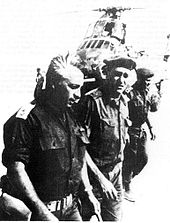







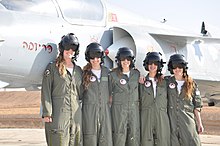





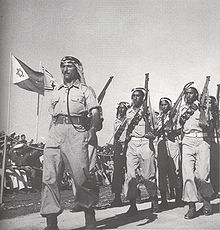








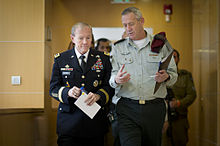


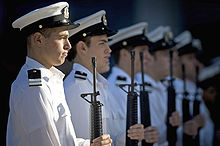

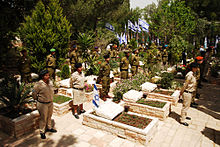

IDF (disambiguation)EmblemService branchesIsraeli Ground ForcesIsraeli Air ForceIsraeli NavyPrime MinisterBenjamin NetanyahuDefense MinisterIsrael KatzChief of the General StaffHerzi HaleviConscriptionReserve personnelBudgetranked 15thPercent of GDPIndustryIsrael Aerospace IndustriesIsrael Military IndustriesIsrael Weapon IndustriesElbit SystemsElisraRafaelIsrael ShipyardsUnited StatesGermanyUnited KingdomFrance1948 Arab–Israeli WarReprisal operationsSinai WarSix-Day WarWar of AttritionYom Kippur WarOperation Litani1982 Lebanon WarSouth Lebanon conflictFirst IntifadaSecond Intifada2006 Lebanon WarGaza War (2008–2009)2012 Gaza War2014 Gaza War2021 Israel–Palestine crisisIsrael–Hamas war2024 Israeli invasion of LebanonOthersIsrael Defense Forces ranksHebrewmilitaryState of IsraelIsraeli security apparatusIsraeli Defense MinisterDavid Ben-Gurionconscript militaryYishuvHaganahIsraeli Declaration of Independenceevery armed conflict involving Israel1979 Egypt–Israel peace treaty1994 Israel–Jordan peace treatyLebanonJordansouthern LebanonPalestinian territoriesGaza StripWest BankEast Jerusalemin 2005 from GazaIsraeli–Syrian border incidentsSyrian civil warclose security relationship with the United Statesan operational nuclear weapons capability since 1967nuclear warheadsrepressionPalestinian rightsIsraeli cabinetHaim-Moshe ShapiraHatzoharHistory of the Israel Defense ForcesIsraeli war crimesList of the Israel Defense Forces operationsAriel SharonBattle of Abu-AgeilaNew YishuvSecond AliyahHaMagenBar-GioraHashomerBritish Mandate of PalestineZion Mule CorpsJewish LegionBritish ArmyWorld War I1920 Palestine riots1936–1939 Arab revolt in PalestineField CorpsGuard CorpsPalmachJewish BrigadeDeclaration of Independencethe cabinetAltalena Affairwith provisionsYitzhak Sadeh1947–48 Civil War in Mandatory PalestineinfantryarmouredGolaniCarmeliAlexandroniKiryatiGivatiEtzioniYiftachthe NegevIsrael-Palestinian conflictlow-intensity conflictPalestinian fedayeenSuez CrisisSinai PeninsulaGolan HeightsPalestine Liberation OrganizationBattle of Karamehconventional warfare

